Saturday, April 9, 2016
Monday, April 4, 2016
(Not) Filming
So we were suppose to start filming today but my actors are the most unreliable people I've ever met because both of them cancel on me an hour before my plan. I am so angry! My whole schedule got delayed a day and I have things to do, but I decided to make this work on my favor; today I'm going to make my set even better and more disorganised, I''l put more things in the map. Everything will be fine...hopefully.
Saturday, April 2, 2016
Set
So I created my set today. I went to home depot and bought a map of the United States and put it on my dad's office. Then I got pins and sticked it on the main places were the investigation font and put a string connecting them all. I also wrote the credits on post it notes and put it all over the map. The desk right next to it is messy and has things all over it. I based it on many sets that I've seen on Dester - a show about a psycho killer who selves murder- and it looks just the way I want it to be. I'll start filming tomorrow.
Friday, April 1, 2016
Actors
Wednesday, March 30, 2016
Characters
Hey guys! So I already have the stories and the actors and the location and pretty much everything EXCEPT the characters and their personalities (good job Ana!). So I guess this is the time for me to tell you all about Charles "Charlie" Bekham and Erik Castillo. Charlie is from North Carolina, borned and raised, by the end of high school year he made the life changing decision of studying criminology. Right after graduation, he found a job at a local company but before he knew it he got relocated to Miami. He then finds himself working on a case that he can't solve. Erik Castillo was born in Miami, he was always a lonely boy and never had any friends. As time went by he started talking to some people online. making his first friend at the age of 21. He then starts to obsessively talk to them until he scare them away. Erik then makes his life goal to befriend them again, he tracks them down and kidnaps them one by one.
Saturday, March 26, 2016
On with the research Pt. 2
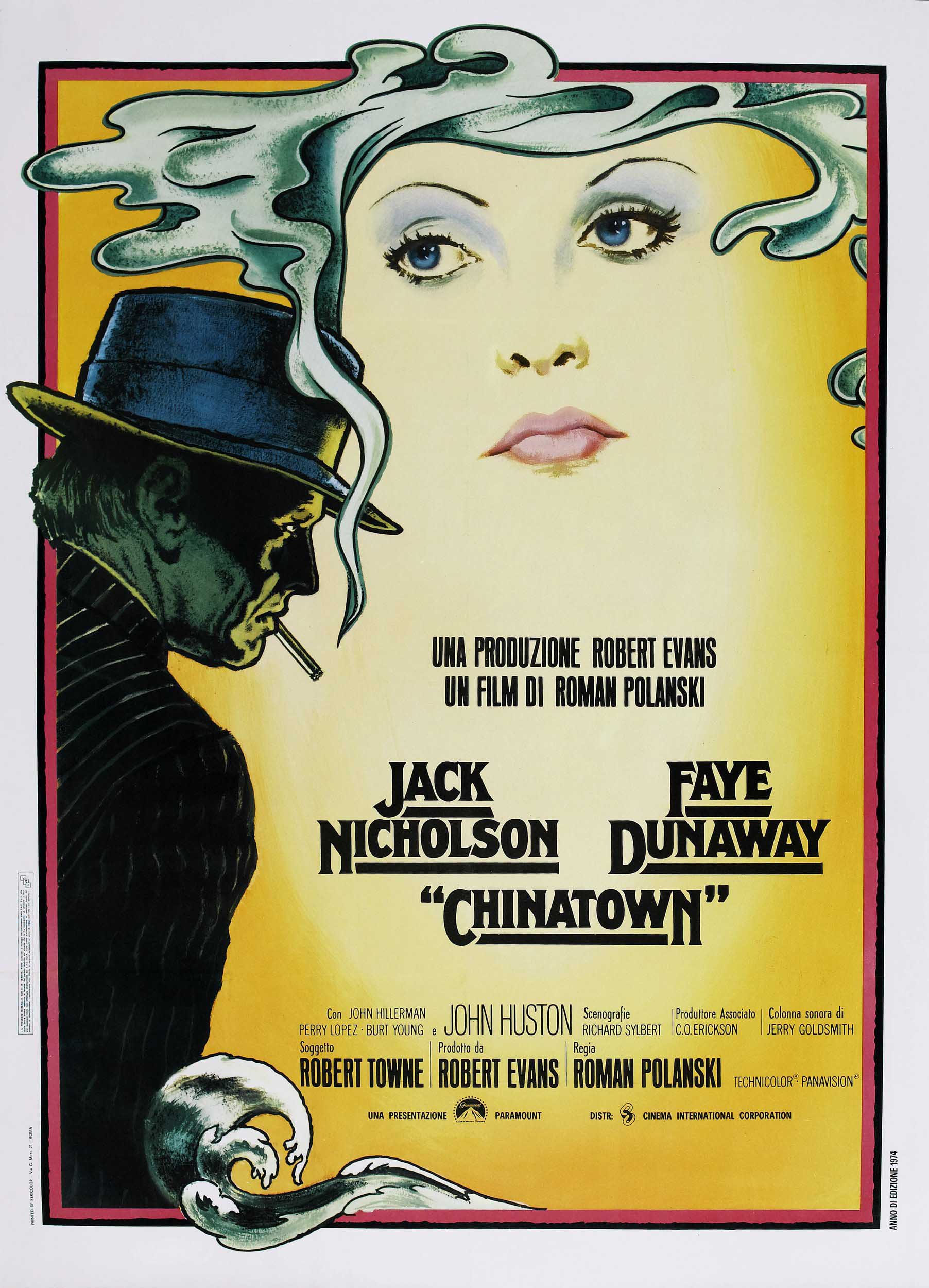 I have to confess something... I haven't seen all films mentioned in the last post and I'm ashamed. I just haven't had enough time and I've been so busy with school and- Well I'll watch them. From the ones I've seen, though, Chinatown is definitely my favourite. I love the way Roman Polanski takes a simple character and a simple plot and twists it to a bigger scale.
I have to confess something... I haven't seen all films mentioned in the last post and I'm ashamed. I just haven't had enough time and I've been so busy with school and- Well I'll watch them. From the ones I've seen, though, Chinatown is definitely my favourite. I love the way Roman Polanski takes a simple character and a simple plot and twists it to a bigger scale. The film follows private detective JJ 'Jake' Gittes played by Jack Nicholson- which makes the movie 100 times creepier by itself- who specialises in matrimonial cases. He is hired by Mrs. Mulwray, played by Faye Dunaway, to find out if her husband is cheating; but when she is found dead late that night Jake is sucked into a web of murder, incest and corruption.
Only having limited time both on and off screen I won't have such a complicated plot, but I do want to have a similar tone to this movie.
Friday, March 25, 2016
On with the research
Hey hey guys! So I searched up the top 100 best film noirs of all time and this is what the internet thinks represents the top 10 and here it is:
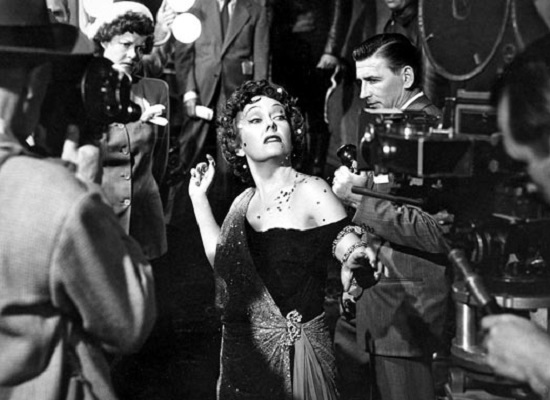


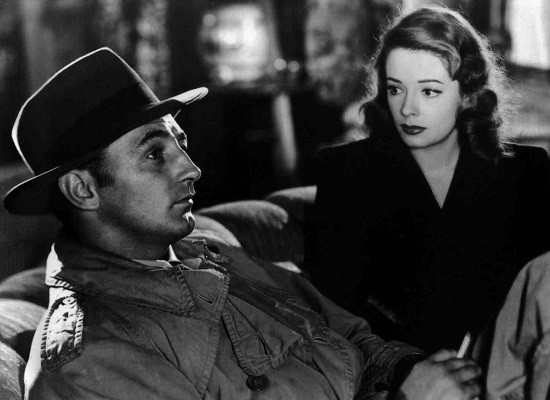

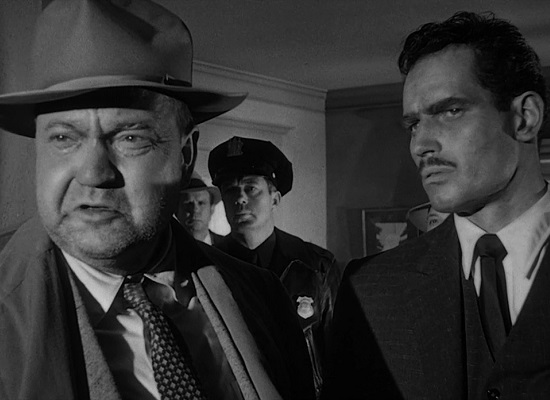

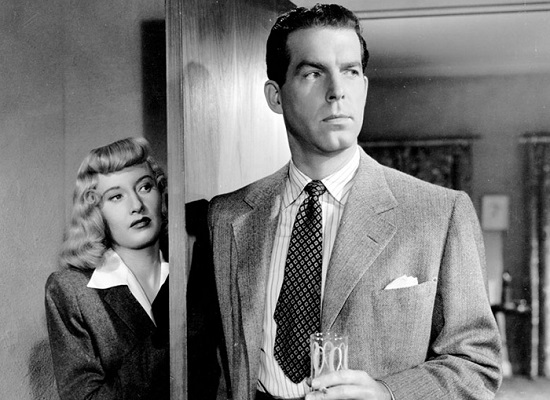
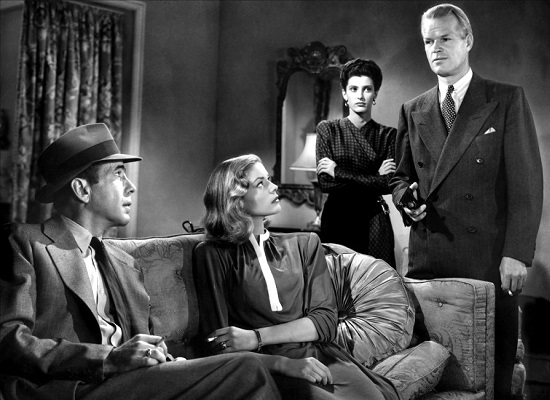
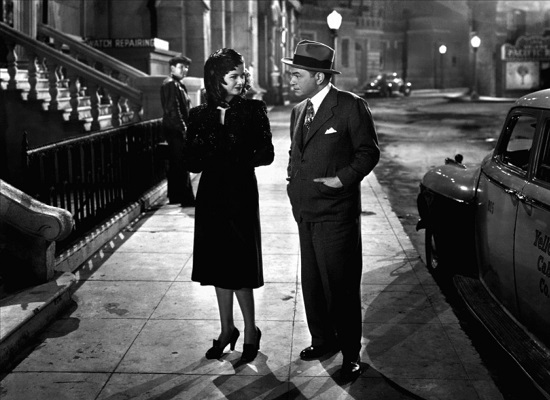
10. Sunset Boulevard
Director: Billy Wilder
Year: 1950
Director: Billy Wilder
Year: 1950

9. Laura
Director: Otto Preminger
Year: 1944
Director: Otto Preminger
Year: 1944

8. Kiss Me Deadly
Director: Robert Aldrich
Year: 1955
Director: Robert Aldrich
Year: 1955

7. Out of the Past
Director: Jacques Tourneur
Year: 1947
Director: Jacques Tourneur
Year: 1947

6. The Third Man
Director: Carol Reed
Year: 1949
Year: 1949

5. Touch of Evil
Director: Orson Welles
Year: 1958
Year: 1958

4. Chinatown
Director: Roman Polanski
Year: 1974
Year: 1974

3. Double Indemnity
Director: Billy Wilder
Year: 1944
Year: 1944

2. The Big Sleep
Director: Howard Hawks
Year: 1946
Year: 1946

1. The Woman in the Window
Director: Fritz Lang
Year: 1944
Year: 1944

Due to the lack of space I'll explain my thinking in the next post don't you worry!
Thursday, March 24, 2016
Article
When searching up examples of film noir I found an article explaining its characteristics. Here it is:
CHARACTERISTICS
In addition to unsettling narrative themes of ambiguity and violent death, certain stylistic characteristics immediately come to mind when discussing film noir.
Stark, angular shadows. The isolated feel of modern cities. Conflicted anti-heroes and terse dialogue. Determined, beautiful, scheming women.
Taken together, these created a unique body of films that continues to be discussed and emulated even today.
Many film noir characteristics were the result of an interaction between filmmakers, new filmmaking techniques, and a tension and uncertainty that lay underneath the patriotism and optimism of the 1940s.
MOOD AND STYLE
It can be argued that nearly every attempt to define the film noir comes to agree that the sometimes very diverse noir films are united by the consistent thread of a visual style that emphasizes a claustrophobic and off-balance feel to the world.
As Janey Place and Lowell Peterson state, it is the constant opposition of areas of light and dark that characterizes film noir cinematography. Harsh, low-key lighting brought about the high contrast and rich, black shadows associated with the films. Place and Lowell discuss the newly-developed technical significance of depth of field, which is essential for keeping all objects in the frame in sharp focus and the resultant need for wide-angle lens, which creates a distorted view of the image, as well as drawing the viewer into the picture and creating a sense of immediacy with the image.1
The impact of German Expressionist lighting was brought to bear by the large number of German and East Europeans working in Hollywood: Fritz Lang, Billy Wilder, Otto Preminger, Robert Siodmak to name a few.
Schrader noted that on the surface, the artificial studio lighting of the German Expressionist influence might have seemed incompatible with postwar realism, but the unique quality of film noir allowed it to meld the seemingly contradictory elements into a uniform style. Films such as Union Station, They Live by Night, and The Killers bring together an "uneasy, exhilarating combination of realism and Expressionism."2
The visual look and feel of the films contributed to the unsettled sense of claustrophobia and distortion in the stories: nothing was as it seemed.
"HARD-BOILED" TRADITION
Many of the original American film noirs identified and analyzed by the French critics were adapted from popular and critically admired novels from the 1930s. William Marling writes that "the debt of film noir to the novels of Hammett, Cain, and Chandler may by now seem clear."3
These authors had their roots in pulp fiction, with a tough, cynical way of acting and talking. Schrader notes that when the filmmakers of the 1940s turned to the "American 'tough' moral understrata, the hard-boiled school was waiting with preset conventions of heroes, minor characters, plots, dialogue and themes."4
URBAN MODERNITY
American cities grew tremendously during the war years as workers flocked to rapidly expanding urban areas for the promise of new jobs. As the urban population exploded, especially in the industrial north, a new modern prosperity and its problems weren't far behind.
In Somewhere in the Night, Nicholas Christopher writes evocatively of the complex connection between film noir and the city. "The great, sprawling American city, endless in flux, both spectacular and sordid, with all its amazing permutations of human and topographical growths, with its deeply textured nocturnal life that can be a seductive, almost otherworldly, labyrinth of dreams or a tawdry bazaar of lost souls: the city is the seedbed of noir."5
America rediscovered film noir in the 1970s, in part John Belton notes, because of Paul Schrader's well-recognized "Notes on Film Noir," written in 1972. When Belton refers to Taxi Driver (1976) in his introduction to a series of essays on Movies and Mass Culture, he could well be discussing late 1940s film noir as he writes, "New York City is portrayed as an urban inferno, inhabited by a disaffected and alienated populace that has surrendered itself to the crime and corruption brought about by industrialization and urbanization."6
This modern sense of alienation and underbelly of corruption in the mean cities played a significant part in creating the texture and dark mood of film noirs.
CONFLICTED HEROES
In the October 18, 1943 issue of The New Republic, Manny Farber took note of the development of a new breed of contradictory hero in American films who stood in opposition to the American traditional hero represented by Gary Cooper. This "anti-intellectual, anti-emotional and pro-action" hero was personified by Humphrey Bogart - the cynical Rick of Casablanca and the mercenary Sam Spade of The Maltese Falcon.
Acknowledging changes in the American psyche during the early war years, he wrote, "in a world where so many people are doing things they dislike doing, Bogart expresses the hostility and rebellion the existence of which the Cooper tradition ignores," going on to note that, "he is the soured half of the American dream, which believes that if you are good, honest and persevering you will win the kewpie doll." 7
Noir protagonists were almost always single men, often detectives who were once cops, psychologically flawed or wounded, and although they might appear morally ambiguous or compromised, they usually adhered to their own personal code of right and wrong. In Projecting Paranoia, Ray Pratt finds that, "some form of cynicism – even fatalism – and hard-bitten wisecracking is universal among these PIs, as is their aura of compromised, world-wary morality."8
Often, these anti-heroes found themselves tempted by a woman, looking for a man to further their schemes.
FEMME FATALES
Quart and Auster describe this relationship as, "a world where women, often in the central role, were glamorous and dangerous – seductive sirens whose every action was marked by duplicity and aimed at satisfying a desire for wealth and power – while the male protagonists were frequently weak, confused and morally equivocal, susceptible to temptation, and incapable of acting heroically."
They argue that many Hollywood films, especially in the postwar era, usually made sure that by the end, career women would be domesticated and see the error of their ways when they competed with men. The film Mildred Pierce, staring Joan Crawford, ended with Mildred being punished for being a strong, independent woman by being treated with contempt and being betrayed by her eldest daughter.
As they examine possible explanations for the diverse, powerful images of female menace and power as women took on the roles of murderous wives and lovers, Quart and Auster suggest that this tendency may be due in part from American soldier's fears of infidelity at home during World War II. However, they are quick to note, along with most critics, that no matter how much the camera focused on the "predatory sexuality or psychological strength of the female, male dominance was always restored by the film's climax."9
The new economic, social, and sexual freedoms that women experienced during the war years as they joined the laborforce in record numbers was deeply unsettling to many Americans. This conflict and fear of strong, independent women – and the desire to show the dangers of this independence – was reflected, consciously or not, in most film noir films.
CHARACTERISTICS
In addition to unsettling narrative themes of ambiguity and violent death, certain stylistic characteristics immediately come to mind when discussing film noir.
Stark, angular shadows. The isolated feel of modern cities. Conflicted anti-heroes and terse dialogue. Determined, beautiful, scheming women.
Taken together, these created a unique body of films that continues to be discussed and emulated even today.
Many film noir characteristics were the result of an interaction between filmmakers, new filmmaking techniques, and a tension and uncertainty that lay underneath the patriotism and optimism of the 1940s.
MOOD AND STYLE
It can be argued that nearly every attempt to define the film noir comes to agree that the sometimes very diverse noir films are united by the consistent thread of a visual style that emphasizes a claustrophobic and off-balance feel to the world.
As Janey Place and Lowell Peterson state, it is the constant opposition of areas of light and dark that characterizes film noir cinematography. Harsh, low-key lighting brought about the high contrast and rich, black shadows associated with the films. Place and Lowell discuss the newly-developed technical significance of depth of field, which is essential for keeping all objects in the frame in sharp focus and the resultant need for wide-angle lens, which creates a distorted view of the image, as well as drawing the viewer into the picture and creating a sense of immediacy with the image.1
The impact of German Expressionist lighting was brought to bear by the large number of German and East Europeans working in Hollywood: Fritz Lang, Billy Wilder, Otto Preminger, Robert Siodmak to name a few.
Schrader noted that on the surface, the artificial studio lighting of the German Expressionist influence might have seemed incompatible with postwar realism, but the unique quality of film noir allowed it to meld the seemingly contradictory elements into a uniform style. Films such as Union Station, They Live by Night, and The Killers bring together an "uneasy, exhilarating combination of realism and Expressionism."2
The visual look and feel of the films contributed to the unsettled sense of claustrophobia and distortion in the stories: nothing was as it seemed.
"HARD-BOILED" TRADITION
Many of the original American film noirs identified and analyzed by the French critics were adapted from popular and critically admired novels from the 1930s. William Marling writes that "the debt of film noir to the novels of Hammett, Cain, and Chandler may by now seem clear."3
These authors had their roots in pulp fiction, with a tough, cynical way of acting and talking. Schrader notes that when the filmmakers of the 1940s turned to the "American 'tough' moral understrata, the hard-boiled school was waiting with preset conventions of heroes, minor characters, plots, dialogue and themes."4
URBAN MODERNITY
American cities grew tremendously during the war years as workers flocked to rapidly expanding urban areas for the promise of new jobs. As the urban population exploded, especially in the industrial north, a new modern prosperity and its problems weren't far behind.
In Somewhere in the Night, Nicholas Christopher writes evocatively of the complex connection between film noir and the city. "The great, sprawling American city, endless in flux, both spectacular and sordid, with all its amazing permutations of human and topographical growths, with its deeply textured nocturnal life that can be a seductive, almost otherworldly, labyrinth of dreams or a tawdry bazaar of lost souls: the city is the seedbed of noir."5
America rediscovered film noir in the 1970s, in part John Belton notes, because of Paul Schrader's well-recognized "Notes on Film Noir," written in 1972. When Belton refers to Taxi Driver (1976) in his introduction to a series of essays on Movies and Mass Culture, he could well be discussing late 1940s film noir as he writes, "New York City is portrayed as an urban inferno, inhabited by a disaffected and alienated populace that has surrendered itself to the crime and corruption brought about by industrialization and urbanization."6
This modern sense of alienation and underbelly of corruption in the mean cities played a significant part in creating the texture and dark mood of film noirs.
CONFLICTED HEROES
In the October 18, 1943 issue of The New Republic, Manny Farber took note of the development of a new breed of contradictory hero in American films who stood in opposition to the American traditional hero represented by Gary Cooper. This "anti-intellectual, anti-emotional and pro-action" hero was personified by Humphrey Bogart - the cynical Rick of Casablanca and the mercenary Sam Spade of The Maltese Falcon.
Acknowledging changes in the American psyche during the early war years, he wrote, "in a world where so many people are doing things they dislike doing, Bogart expresses the hostility and rebellion the existence of which the Cooper tradition ignores," going on to note that, "he is the soured half of the American dream, which believes that if you are good, honest and persevering you will win the kewpie doll." 7
Noir protagonists were almost always single men, often detectives who were once cops, psychologically flawed or wounded, and although they might appear morally ambiguous or compromised, they usually adhered to their own personal code of right and wrong. In Projecting Paranoia, Ray Pratt finds that, "some form of cynicism – even fatalism – and hard-bitten wisecracking is universal among these PIs, as is their aura of compromised, world-wary morality."8
Often, these anti-heroes found themselves tempted by a woman, looking for a man to further their schemes.
FEMME FATALES
Quart and Auster describe this relationship as, "a world where women, often in the central role, were glamorous and dangerous – seductive sirens whose every action was marked by duplicity and aimed at satisfying a desire for wealth and power – while the male protagonists were frequently weak, confused and morally equivocal, susceptible to temptation, and incapable of acting heroically."
They argue that many Hollywood films, especially in the postwar era, usually made sure that by the end, career women would be domesticated and see the error of their ways when they competed with men. The film Mildred Pierce, staring Joan Crawford, ended with Mildred being punished for being a strong, independent woman by being treated with contempt and being betrayed by her eldest daughter.
As they examine possible explanations for the diverse, powerful images of female menace and power as women took on the roles of murderous wives and lovers, Quart and Auster suggest that this tendency may be due in part from American soldier's fears of infidelity at home during World War II. However, they are quick to note, along with most critics, that no matter how much the camera focused on the "predatory sexuality or psychological strength of the female, male dominance was always restored by the film's climax."9
The new economic, social, and sexual freedoms that women experienced during the war years as they joined the laborforce in record numbers was deeply unsettling to many Americans. This conflict and fear of strong, independent women – and the desire to show the dangers of this independence – was reflected, consciously or not, in most film noir films.
Tuesday, March 22, 2016
Sub-genres of Mystery/Suspense Film
Closed-Mystery
Doesn't identity of the main criminal until the very end of the film. The storyline adds an extra element of suspense to the plot, No one is really sure who committed the murder and who to blame. There are many suspects
Examples: Clue, Murder of the Orient Express, Bones
Film-Noir
A distinct, stylistic type of crime-drama or thriller/mystery that was very popular during 1940s and 1950s. Usually ultilizes black-and-white style with stark visual lighting effects. Relies on a narrative voice and various flashbacks to explain the intricate plot. Main character is usually a cynic hero
Examples: The Woman in the Window, Chinatown,Sunset Boulevard
Open-Mystery
Opposite of a Closed Mystery obviously. Main criminal is revealed at the beginning of the story. These showcasing “the prefect crime” scenarios. Suspense comes from how the crime was committed.
Examples: Oceans 11, Thomas Crown Affair, The Italian Job.
I decided to go more on the film noir route but use many characteristics from the close mystery sub genre for its high suspense and the element of surprise.
Sunday, March 20, 2016
The actual stuff
Hey guys! This is what I have for my story board. I'll obviously extend it a lot but I needed to put something down to help further my vision.
I love the first page and I'm so excited to shoot it but after that I just can't think of a way to continue it and a way keep the story going. I know it's going to end w a close up of a hand while blood comes out and the title appears in it but in between I'm lost. Thus I'll continue doing more research to see if I get a random burst of inspiration from it. Wish me luck please!
Wednesday, March 16, 2016
Storyboard
Hey guys! I have a vision in mind but I don't know how to put it on paper so I'm looking at different storyboards from different directors. One that struck me was Hitchcock's 'The Birds' storyboard for its accuracy and cleanness. You can see shot by shot what he had in mind. I'm hoping that will able me to create a real story and not just a concept. Let's see how it goes!
Saturday, March 12, 2016
New Ideas
Hey Guys! So here's my idea:
The film is gonna start with an extreme close up of a pin in a map. The camera is then gonna slowly follow a red string attached to it leading to another pin, then another, then another until it reaches the final destination.
 When it does the camera is gonna slowly dolly out showing the whole map and a man standing in front of it talking on the phone while holding a bag.
When it does the camera is gonna slowly dolly out showing the whole map and a man standing in front of it talking on the phone while holding a bag.
I do not now the setting, the time or location but I have a clear vision and thought on how to achieve it.
I was thinking that maybe the story could be set in the 40's and have a mysterious tone. I still do not know.
Next step would be look up as many mystery films as I can to see if that's what I really want.
The film is gonna start with an extreme close up of a pin in a map. The camera is then gonna slowly follow a red string attached to it leading to another pin, then another, then another until it reaches the final destination.
 When it does the camera is gonna slowly dolly out showing the whole map and a man standing in front of it talking on the phone while holding a bag.
When it does the camera is gonna slowly dolly out showing the whole map and a man standing in front of it talking on the phone while holding a bag.I do not now the setting, the time or location but I have a clear vision and thought on how to achieve it.
I was thinking that maybe the story could be set in the 40's and have a mysterious tone. I still do not know.
Next step would be look up as many mystery films as I can to see if that's what I really want.
Friday, March 11, 2016
What To Do Now ?
Hello Guys! I have officially decided NOT to do a horror film, meaning that I have to choose another genre and change everything that I had in mind. Urgh!! I was researching some other genres but I couldn't find anything that really stick to me. I just don't know.

 Yesterday I was out with my friends after school and I had a vision. I got so excited but I knew I was gonna forget it as soon as I stopped talking so I sent my friend a voice note while I thought of it; from the voice note I found a more independent side to my story so I researched a couple of independent movies, the only problem is that Independent film are hard to describe and is not really a genre to begging with thus I have to find another genre beneath it.
Yesterday I was out with my friends after school and I had a vision. I got so excited but I knew I was gonna forget it as soon as I stopped talking so I sent my friend a voice note while I thought of it; from the voice note I found a more independent side to my story so I researched a couple of independent movies, the only problem is that Independent film are hard to describe and is not really a genre to begging with thus I have to find another genre beneath it.
For example, Juno is an independent film but it is also a comedy/drama. Memento is a mystery within itself. So there's a lot of possibilities I just gotta choose the right one.

For example, Juno is an independent film but it is also a comedy/drama. Memento is a mystery within itself. So there's a lot of possibilities I just gotta choose the right one.
Thursday, March 10, 2016
Hello Guys :)
Okay, so here it goes… I have this huge project for media studies. We have been talking about it since the beginning of the year. Although I’m super excited and have so many ideas, I don't know where to start and it’s so frustrating. Of course I decided to do it alone, by myself, without anyone…again. I haven't learned anything from last year have I? (last year I did a film project alone and it didn’t go well but that’s for another time).
Being my first blog post ever I’m not very sure what I’m suppose to write about so i’m just gonna tell you my ideas for my project.
 |
| Saw (2004) |
 |
| The Shinning (1980) |
I first wanted to do horror because I love horror and I think I would have a lot of fun making it. I even started searching up films I liked and watching their intros.
After watching way too many horror flicks I decided that maybe that's not the perfect choice for me so I have decided to do something else. Wish me luck!
Subscribe to:
Posts (Atom)




